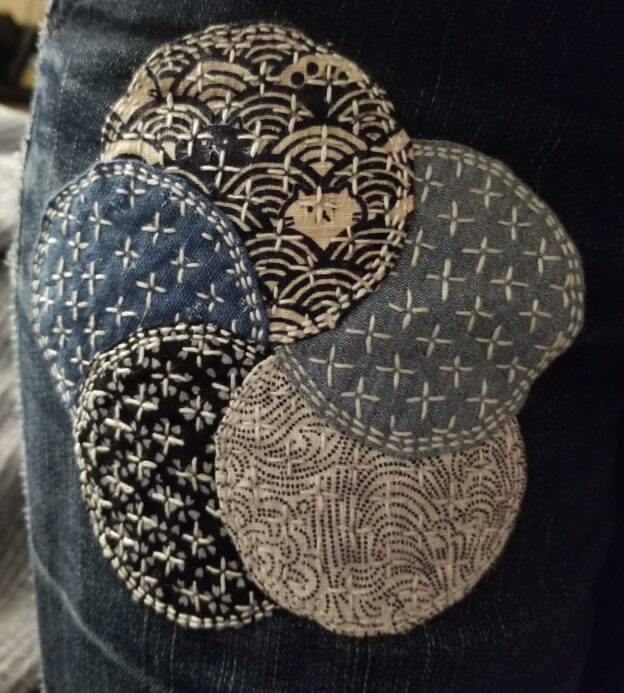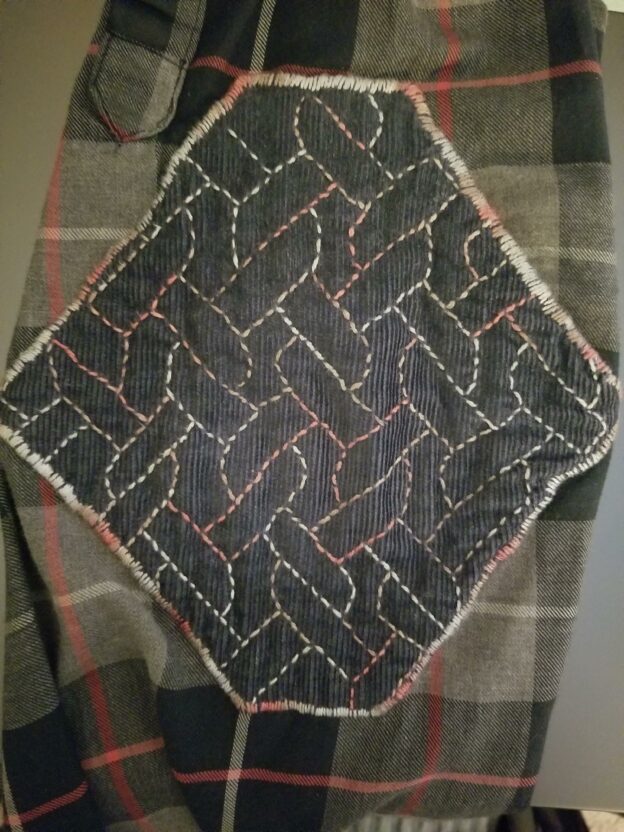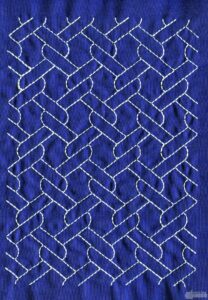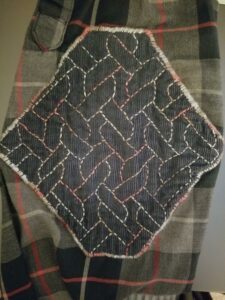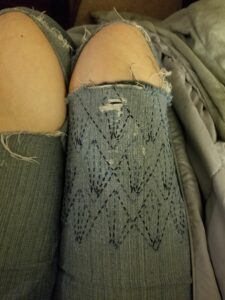My favorite pair of jeans cost me $8. They were originally intended to complement a leather jacket and a ripped tank top soaked in fake blood as part of an October Daye cosplay, but I liked them too much not to keep wearing them. Alas, denim doesn’t last forever, moreso when it’s the stretch kind, and I’ve made a repair near one pocket already. Now the area over the front pocket is wearing out, and so are some places along the side seams. Time to beautify.
I initially thought I could just put a field of classic sashiko over the entire area, but as time went on and I didn’t do it, enough of the fabric eroded that that wasn’t going to work anymore. I was going to need a patch, and after a little thinking I had an idea of what I wanted to do. First I needed some more fabric in coordinating colors, and the Japanese fabric scrap pack from Snuggly Monkey (yes this is going to be a should-be-sponsored post) had exactly what I was looking for. I traced circles on five of the pieces, added a seam allowance around about 2/3 of each, and basted a quick hem.
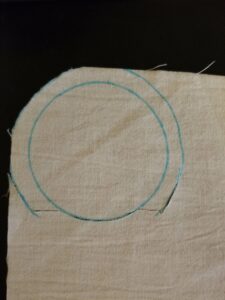
Arrange into a plumeria and baste together.
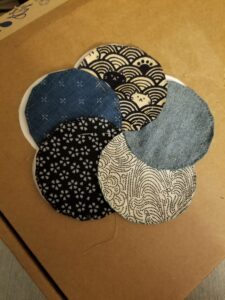
At the last minute, I decided I needed a backing to prevent ongoing wear from ruining the patch from behind. I picked some gray suiting that had a little stretch to it, and promptly discovered that it was very fray-prone and I should have cut it bigger. In True Me Fashion, I did not. I did, however, learn from last time regarding the alignment of patches inside to outside, and traced around the basted-on patch to get it situated properly. Then I did another round of basting before stitching a double seam around the visible edge of each circle with off-white sashiko thread. I didn’t get a picture of this step, but the stitching is (obviously) visible in the final shot.
Now for the brainfuck. I knew I wanted to do an all-over pattern, and I thought I might just go with jujizashi, but it didn’t look quite right. After a little experimentation, I settled on something similar, but with the center clear. The plan was to have the pattern on the same grid (as measured by plastic canvas) over the whole patch. The problem was that I couldn’t just use a single method for marking the grid, because of all the different colors. My blue marker showed up on everything light, but not anything dark. And the cat print, being both, was a total nightmare. After several false starts, I ended up wetting a water soluble white marking pencil to ensure the pigment stuck to the fabric, realigning the canvas grid for each section so as not to rub the marks off while stitching.
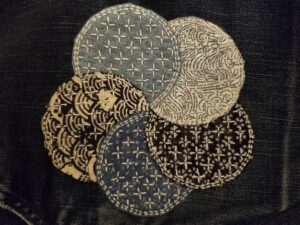
It really helped to mark out the lines at first. As I went along, I only had to mark five dots per cross. (Except when I miscounted.)
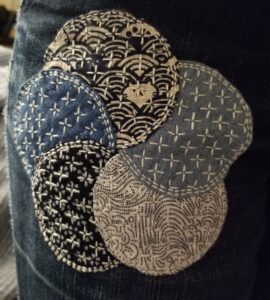
The finished patch! Still need to reinforce the seams with twill tape and cover them up with the ribbons I got from Etsy. Yes, this is all on a pair of $8 jeans, but hey, it’s about the process as much as the result. And both were awesome.
